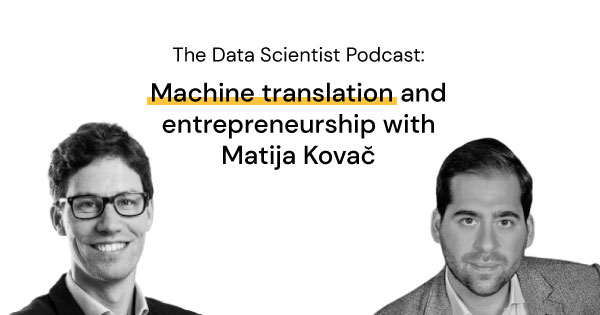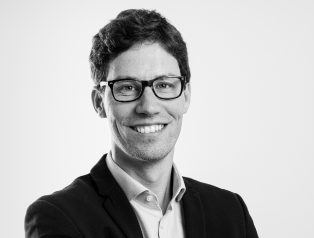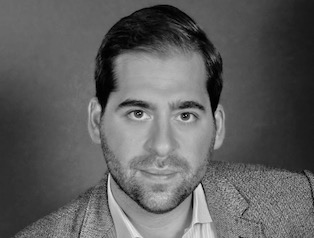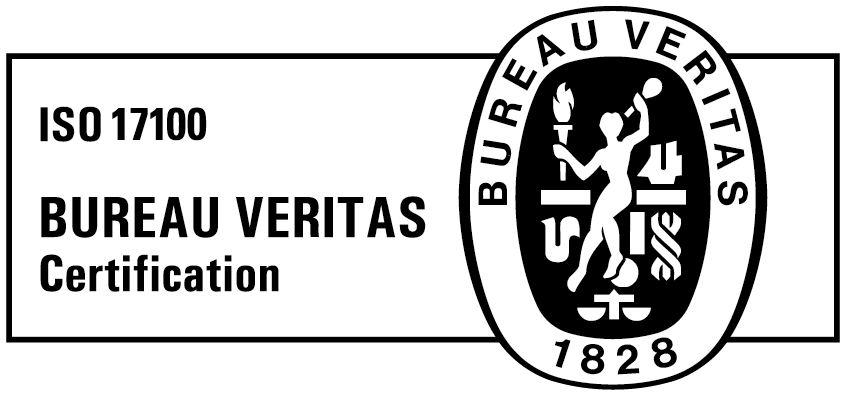Podcast
Discussing Machine Translation for Companies With Matija From Taia
Matija and Dr. Stylianos discuss how advanced machine translation for companies is revamping the translation industry. They touch on the topic of Taia’s early beginnings as well as what the future holds for the company. Matija explains how machine translation helps businesses deliver content faster and more efficiently.


Matija Kovač
Co-founder / Head of Development @Taia

Dr. Stylianos Kampakis
CEO / Data Science Advisor @The Tesseract Academy
What you'll learn
- What it’s like to be an entrepreneur in post-Brexit Britain.
- Why putting your headquarters in London can help your business grow.
- How Taia realized its niche in the market and started its story.
- How machine translation for companies has drastically improved over the last few years.
- How advanced machine translation for companies can improve workflow on the way to becoming a global player.
- How the translation process looks in global companies.
Transcript
Dr. Stylianos: Hi, everyone. Welcome to the Data Scientists podcast. Today with us, we have Matija Kovač from Taia Translations. Hi, Matija. Welcome.
Matija: Hi, Stelios. Thanks for having me.
Dr. Stylianos: Well, we’re, we’re glad you’re here. Would you tell us a few words about yourself? Like where you are based, what you are working on, et cetera.
Matija: Great. So, yeah, I’m the co-founder at Taia and also the CTO. We’re based in London, it’s where our HQ is, and a lot of our team is already in the UK now, but originally I come from Slovenia, a small country next to Austria and Italy south of the Alps. And it’s a lovely place, but when it comes to technological development and building an international start-up, we decided to move over to the UK so we have a better foothold.
We’re building a localization platform. That’s partially AI-based, AI-powered, and we’re helping companies to get their content localized faster so they can scale faster and more efficiently into international markets. So that’s what we’re mainly focused on.
Dr. Stylianos: Great. So, what are you trying to get in London? The international talent, the investment or the combination of all these factors.
Matija: Yeah, exactly that. So, there is no better place to find good talent, no better place to find a good investment for our next round. But also it’s a very multicultural, international place where you can grow your company way faster than you can in most other places in Europe. So, London has always been a very appealing place for me.
Dr. Stylianos: And do you think that Brexit is going to affect this in a serious way?
Matija: I think the effects are already showing. There’s a lot of issues coming out of Brexit that people weren’t even expecting. A lot of the issues that we were expecting as well. But in time, things will straighten out just like they usually do so I’m hopeful that everything will turn out well.
I mean, we still have our European company here in Slovenia. That makes sense so that we can do some things in the EU and some things in the UK and get ready to launch in the US next year.
Dr. Stylianos: I guess it’s good to get the best of both worlds. Most start-ups, want to move to the US because the market is just bigger, I guess.
Matija: It’s way bigger. Yeah. And when it comes to localization, the US is really huge. About 45% of the global market. I think something like that. It’s pretty big.
Dr. Stylianos: Yeah. And what inspired you to create this company? To build it around translation and localization?
Matija: Well, I am a nerd programmer at heart. I’ve always been, but at the university, I studied Chinese studies among other things. I also lived in China for a while and traveled there a lot. Eventually, I met Marko and he already had one of his early companies. He’s more or less a serial entrepreneur. He had started a few start-ups and exited some of them successfully and at some point, we were discussing our potential collaboration and he said why don’t we make a language school together?
You’re good at languages and I’m an entrepreneur. I have all of this experience. We can combine the two and become quite successful. So, initially, we started off with a language school that is still running. It’s still pretty successful in our local region. A lot of our clients were companies that were ordering language courses with us and they were happy with us and they asked us if we could also provide translation services for them. So, we thought, okay, let’s see how that goes. We started preparing the foundation to get there and we realized that the market has a huge potential. There is such a demand for so many translation services every day.
But a lot of the stuff that gets done is still done very manually with outdated software, sometimes with entirely unautomated processes. And we realized there’s a huge loss of human potential here, that with proper automation, we can give people more meaningful jobs, so they don’t have to do repetitive tasks anymore.
So, that’s how the idea behind the Taia platform was born and we started developing it. In a few months, we had an MVP, a sort of a demo. We were showing it around to some potential investors and that was when they finally realized what we’re actually building because while we were just pitching, it was hard to explain. When you have a demo, it’s much easier.
That helped us to secure first funding and start generating first revenue. We were then were able to start building a proper team around the product and a proper business model. And from then on, things started to scale up. So, now we’re about three years into our development. We launched in late 2018.
That’s about it. We’re now a team of 32 people in the UK, in Cyprus, in Spain, and in Slovenia and we’re moving ahead towards bigger goals and bigger ambitions.
Dr. Stylianos: Great, that’s a very good story. I’m surprised to hear that about translation because, as a data scientist, I have observed some great advances in natural language processing in the last few years, many of them coming from Google.
Google did this big and fancy neural network that can translate multiple languages to other languages simultaneously. So, you find that most translators are not aware of this?
I mean, it’s not like a service, it’s not like a Google service that I personally try to use. But from what you’re saying, it sounds like the translation and localization industry is a bit behind the actual technological capabilities.
Matija: Right. I mean, at least that was the situation when we started building. Things have changed drastically in the last three to four years. But if you think back not even long ago, Google translate was still a joke.
Just before 2016, when they launched their first neural machine translation solution when it was still a statistical model. I mean, it was usually just a tool where people were either trying to get dictionary solutions, not actual translations, or just using it for fun because it produced a lot of hilarious results.
And then at some stage it just wasn’t funny anymore. It just started getting better and better and if you look at what these tools such as Google Translate can do now. I mean, it’s quite scary and it’s becoming very apparent even to the most stubborn of translators and the most outdated of companies out there that neural machine translation is not only here to stay, but it’s definitely a tsunami that’s changing the entire scenery of the localization industry. So, things are bound to change. They’re changing at a very rapid pace. And one thing we want to do as a company is we want to be able to serve this wave rather than being swept underneath. So, to get on top of this tsunami, leverage this technology and bring it to as many people as necessary.
So, essentially, we’re not trying to compete with Google Translate. What we’re doing is we’re putting multiple layers of technology around machine translation. Not only Google Translate, obviously, but other similar solutions as well to provide enterprise customers with faster and more efficient service than what they’re currently paying for. If that makes sense.
Dr. Stylianos: And are you using your own proprietary algorithms or are you also plugging into APIs from Google or IBM Watson or other companies.
Matija: We have an interesting mix really, depending on the client and their needs, but we have an interesting mix of all three. So, we use a lot of our proprietary technology at some levels, and then, you know, we rely a lot on existing open-source technologies, which we’re very grateful for. There’s a lot of opportunities out there to learn from and to build on, but in some cases, we just fall back on third-party APIs, if that’s what we need to rely on. So, it really depends on the situation.
I think this is the only way you can build a start-up these days, trying to build everything from scratch makes no sense. Trying to go with only open-source technologies doesn’t mean you’ve built anything. Anyone else can do the same. But also relying too heavily on a third-party solution can make your business model obsolete overnight.
So yeah, we’re kind of agnostic about this.
Dr. Stylianos: That’s very interesting because you see I’m studying business models for AI and there is always this conundrum. Should you try to develop your own IP? Should you try to use some third-party services? And in some cases, I guess it’s very difficult to compete with third-party services.
So, what you’re saying is that you have identified some gaps in how translations services are being carried out in the real world. So, you are plugging in different offerings to companies, is this correct?
Matija: Something like that, yeah. So, what we put on top of just a machine translation is the processing of files.
For example, if we go through what our workflow usually looks like. Taia is a cloud platform, which means it runs in every browser. You don’t need to install anything and the UI is extremely easy to use. So even if you’re not a tech-savvy person, you’re going to figure it out in a minute or two. It’s that simple.
Basically, you create a new project by dragging and dropping your files. You select your language combinations. So, how many target languages you actually want something translated into. You can pick between 97 different languages. And then you can also select what type of service category this actually belongs to.
Here you can define your content more in detail just to let us know how to work with it, how to process it more successfully. We support 64 different file types, anything ranging from basic office documents, like Word files, PowerPoint files and Excel files all the way down to files that are used for content localization in websites or software, even subtitles all the way down to InDesign, fully designed documents.
Our platform allows you to drag and drop any of these files in and once you download them, it’s going to retain the exact same formatting to what you uploaded automatically. So, there’s no manual intervention required. Basically almost any file type you work with on a daily basis, you’ll get it back in the exact same shape.
Once the file is converted into an industry-standard, it’s also segmented into multiple tiny chunks we call segments and each of these segments is then compared against our existing database of translations. We check if we have an existing match for the segment that you’re looking for already in our database. This means that if you have a lot of repetitive content going on, which is often the case in business. Things like product descriptions tend to repeat a lot, so do legal documents, marketing content sometimes, also annual reports for shareholders and such.
We are talking about everyday business documentation and marketing content. It becomes repetitive at some stage. And if it is repetitive, we are able to serve that instead of translating it again and again and again, and if we don’t have a successful match, we then fall back on one of our machine translation solutions.
We provide that to the user. And then the user can decide whether or not they just want to keep the machine translation only. So, the output that the AI and the entire background of the software generates for them, or if they want to put another human or multiple humans into the loop, just to make sure that everything is translated perfectly.
So, in some cases, our machine translation will be perfectly adequate and it will represent a good solution for you. But in a lot of cases, let’s say with legal documents or marketing content, you wouldn’t want your brand to depend on just a machine translation. You would want to make sure that it’s translated perfectly or sometimes even rewritten from scratch. And this is where the entire ecosystem comes into place. We have an army of freelancers, basically, making sure that these projects are translated correctly. We have our in-house project management team, our vendor management team. They make sure we onboard the right people. They make sure they follow the right process and that you as a customer will eventually get a perfect translation. From every human interaction with the system, the system learns and makes sure to apply this in the next stages. We’re introducing more and more complex levels of automation here, so I’m really looking forward to our future development when we can do even more with this.
Dr. Stylianos: So, if I read you correctly, I guess the main innovation lies around the user experience and the product and plugging in different bits of technology rather than creating some new sort of IP.
Matija: Well, it’s both at the same time.
Some of the IP is also out there and it’s pretty complex. It’s not that simple to handle all of what we handle, but I think most of it is still about to come. We just recently launched our first software-as-a-service solution. It’s called Catapult and it helps companies who have their in-house translators to use the same tools that our professional translators use to translate faster. We’ve measured it, we did a bunch of case studies with clients in the private beta stage and then in the public beta stage. We discovered that our users are up to three to four times faster than they were previously. A lot of our clients, that is enterprises, have a part of their translation services done by outsourced vendors like translation agencies or LSPs.
But in many cases, they also have people in-house who either just review the whole thing or translate it from scratch. And a lot of times what they do is they have a word document open in one part of their screen and Google translate in the other part of their screen. They are literally copy-pasting things back and forth.
And instead of doing that, we gave them a tool that helps them do all of this much faster, while at the same time it learns from what they’re doing and provides them with the correct translations the next time around. Because as I mentioned, a lot of times it’s repetitive content and if they don’t have the time to do it themselves, they can outsource it at any time.
You basically have a robust solution that makes localization much faster, much easier to use and it encompasses all needs of a company in a single platform, so it’s much easier to get around with.
Dr. Stylianos: That’s interesting. And your background, you said this, is in software development, right?
So, now you run a company that has some AI components, and I presume you don’t find yourself developing much software anymore, correct?
Matija: Fortunately not. Yeah. I sometimes miss the days when I was able to, you know, sit down and just build some code, but these days I’m mostly around in meetings and fundraising and helping our development team get to the right results.
I’m also helping in other departments of the company, so I get to write very little code these days.
Dr. Stylianos: Yeah, I get it. I guess that’s the fate of most entrepreneurs. And how is it that you find the transition from being just a developer to running around different companies?
Matija: I’m enjoying it a lot, actually. The other day, I was attending this event and someone put it very cleverly when they said that being an entrepreneur is the only job that gets harder once you’re better at it. So, the better you are, the harder it gets. So, once you have just achieved a new threshold, you just, you know, get to the next stage. It gets more complex. It gets harder, you have more complex problems to solve. So, it’s an everlasting challenge and I like a good challenge. I would suffocate in a boring job. I like this much more.
Dr. Stylianos: Yeah. I guess that’s something that all entrepreneurs would agree with. You must really be interested in this kind of, let’s say work if you’re willing to do it.
Matija: Well, yeah, I mean, if you’re the kind of person who has the stomach for this, then it’s perfect. But some people are just not meant to be entrepreneurs.
Some are more so I guess, and some of us are crazy to even. We establish a family with little kids at the same time as building not one, but two companies and then possibly starting a bunch of other projects as well, just for good measure, you know?
Dr. Stylianos: Yeah. I feel you. I know what you mean, but I guess that’s fascinating, right? Definitely more interesting than a regular job.
Great. Any last words before we conclude, what are your plans now? You said you’re raising your series A if I’m not mistaken and you’re trying to expand to the US.
Matija: Yeah, well, it’s actually a seed round. We’re calling it a seed round. So, last year we raised EUR 1.2 million from a regional fund here, in central Europe. That helped us to establish our footing in the UK, to increase our development team, to rebuild most of our product from scratch to improve a lot on our sales capabilities, on our marketing content, everything, all at once. We’ve really pushed the whole company forward in the last year since we raised this funding.
Now we’re just about to start our next investment round, which we’re calling a seed round. We’re already in touch with a few very prominent VCs, it’s really looking promising so far. We’re about to raise a EUR 3 million round, that’s going to help us further increase the capabilities of the product, get more features and specialties in. However, a major part of the investment, the majority of it will go to increasing our marketing and sales efforts so we can onboard and scale with more users.
We’re hoping, we’re planning to launch it on the US market eventually, probably already in mid-2022. We’re also improving on what the platform has to offer to our users so we can provide as much value as possible to our clients and I’m really looking forward to this.
It’s a really exhilarating time ahead of us. A lot is still to be done, but, yeah, it’s just fun to explore where can we bring this company and what else can we build to make people happier so that they can live a better life, you know?
Dr. Stylianos: Amazing. Thanks a lot. Where can people find more about you, can you please spell out Taia for those who want to maybe visit the website to learn more?
Matija: Right. So, it’s a T A I A.io. Taia.io. It’s a web platform. You can find us on the internet. You can reach out to us on LinkedIn. We’re happy to chat, to help you out if there’s anything you’re interested in. So just, hook me up on LinkedIn or give us a shout. I mean, we’re always happy to have an engaging conversation with someone interested in our technology and our product.
Dr. Stylianos: Amazing. Thank you, Matija. It was a very interesting chat. Thanks for also sharing your experiences with being an entrepreneur and all that. Amazing. So, thanks, everyone. Thank you for listening to this episode, make sure to visit thedatascientist.com for more content on data science, AI, and blockchain.
We hope to see you again soon at some of our events or podcasts or blog posts. Thank you.
Matija: Thanks for having me. Bye.
Liked this content?
Get notified when we publish something similar.
* We don’t spam your email or share it with anyone!
